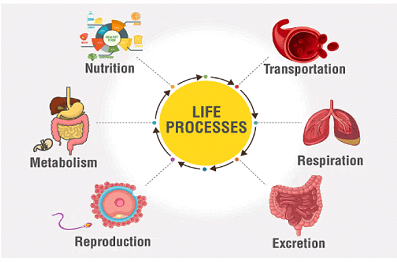Nomenclature of Carbon Compounds
Understanding the systematic naming of organic compounds
Introduction
The nomenclature of carbon compounds is a systematic way of naming organic compounds according to internationally accepted rules. Given the vast number of organic compounds, a standardized naming system is essential for clear communication in chemistry. The International Union of Pure and Applied Chemistry (IUPAC) has established a comprehensive set of rules for naming organic compounds.
Why is nomenclature important? Carbon can form millions of compounds due to its ability to form four covalent bonds and create chains, branches, and rings. Having a systematic naming method ensures unambiguous identification of compounds across the scientific community.
Basic Principles of IUPAC Nomenclature
The IUPAC system follows several key principles:
- Identify the longest continuous carbon chain (parent chain)
- Identify and name substituents (branches)
- Number the carbon atoms in the main chain
- Combine prefixes, parent name, and suffixes according to specific rules
Types of Names in Organic Chemistry
| Type | Description | Example |
|---|---|---|
| IUPAC name | Systematic name following international rules | 2-methylpropane |
| Common/trivial name | Traditional names still in use | Isobutane |
Naming Hydrocarbons
Alkanes (Single Bonds Only)
Alkanes have the general formula CnH2n+2 and are named with the suffix “-ane”.
| Number of Carbon Atoms | Prefix | Formula | Name |
|---|---|---|---|
| 1 | Meth- | CH4 | Methane |
| 2 | Eth- | C2H6 | Ethane |
| 3 | Prop- | C3H8 | Propane |
| 4 | But- | C4H10 | Butane |
| 5 | Pent- | C5H12 | Pentane |
| 6 | Hex- | C6H14 | Hexane |
| 7 | Hept- | C7H16 | Heptane |
| 8 | Oct- | C8H18 | Octane |
| 9 | Non- | C9H20 | Nonane |
| 10 | Dec- | C10H22 | Decane |
Alkenes (Contain Double Bonds)
Alkenes have the general formula CnH2n and are named with the suffix “-ene”.
- The position of the double bond is indicated by numbering the carbon chain.
- The chain is numbered to give the double bond the lowest possible number.
Example: CH3-CH=CH-CH3
The longest chain has 4 carbon atoms (butane as the parent), with a double bond between C2 and C3.
IUPAC name: But-2-ene (or 2-Butene)
Alkynes (Contain Triple Bonds)
Alkynes have the general formula CnH2n-2 and are named with the suffix “-yne”.
- The position of the triple bond is indicated by numbering the carbon chain.
- The chain is numbered to give the triple bond the lowest possible number.
Example: CH3-C≡C-CH2-CH3
The longest chain has 5 carbon atoms (pentane as the parent), with a triple bond between C2 and C3.
IUPAC name: Pent-2-yne (or 2-Pentyne)
Naming Branched Hydrocarbons
For hydrocarbons with side chains or branches, follow these steps:
- Identify the longest continuous carbon chain
- Number the carbon atoms in the main chain (giving priority to functional groups and multiple bonds)
- Identify and name all substituents (alkyl groups)
- List the substituents alphabetically with their position numbers
Common Alkyl Groups (Substituents)
| Structure | Name |
|---|---|
| -CH3 | Methyl |
| -CH2CH3 | Ethyl |
| -CH2CH2CH3 | Propyl |
| -CH(CH3)2 | Isopropyl |
| -CH2CH2CH2CH3 | Butyl |
Example: Naming a Branched Alkane
Consider this structure: (CH3)2CH-CH2-CH(CH3)-CH3
Step 1: The longest chain has 5 carbon atoms (pentane)
Step 2: Number the chain from the end that gives the substituents the lowest numbers
Step 3: Identify substituents: methyl groups at positions 2 and 4
Step 4: Combine to form the name: 2,4-dimethylpentane
Note: When the same substituent appears multiple times, use the prefixes di-, tri-, tetra-, etc., to indicate the number of occurrences.
Naming Compounds with Functional Groups
Functional groups are given priority in naming organic compounds. The functional group determines the suffix of the name.
Priority Order of Functional Groups
When multiple functional groups are present, the group with higher priority determines the suffix:
| Functional Group | Class of Compound | Suffix | Prefix (if lower priority) |
|---|---|---|---|
| -COOH | Carboxylic acid | -oic acid | carboxy- |
| -SO3H | Sulfonic acid | -sulfonic acid | sulfo- |
| -CHO | Aldehyde | -al | formyl- |
| -CO- | Ketone | -one | oxo- |
| -OH | Alcohol | -ol | hydroxy- |
| -NH2 | Amine | -amine | amino- |
| -C≡N | Nitrile | -nitrile | cyano- |
Example: Naming Compounds with Functional Groups
Consider: CH3-CH2-CH(OH)-CH3
Step 1: The longest chain has 4 carbon atoms (butane)
Step 2: The functional group is -OH (alcohol), which has the suffix “-ol”
Step 3: The -OH group is at position 2
Step 4: The IUPAC name is butan-2-ol
Naming Cyclic Compounds
Cyclic compounds have carbon atoms arranged in a ring structure.
Cycloalkanes
Named by adding the prefix “cyclo-” to the corresponding alkane name.
Example: Cyclopentane
A ring of 5 carbon atoms is named as cyclopentane.
Cycloalkenes and Cycloalkynes
For rings with double or triple bonds, the position numbers start at the multiple bond, and then continue to give substituents the lowest possible numbers.
Example: 1-methylcyclohexene
A cyclohexene (6-carbon ring with one double bond) with a methyl group at position 1.
Naming Complex Compounds
For more complex compounds, follow these general steps:
- Identify the parent hydrocarbon (longest chain or priority ring)
- Identify all functional groups
- Determine which functional group gets suffix priority
- Number the parent chain to give the priority functional group the lowest number
- Name all other groups as prefixes
- Arrange prefixes alphabetically (ignoring multiplying prefixes like di-, tri-)
Example: 4-hydroxy-3-methoxybenzaldehyde (Vanillin)
Step 1: The parent is a benzene ring with an aldehyde group (benzaldehyde)
Step 2: Other functional groups: hydroxy (-OH) at position 4, methoxy (-OCH3) at position 3
Step 3: The aldehyde group has priority and gets the suffix
Step 4: The IUPAC name is 4-hydroxy-3-methoxybenzaldehyde
Special Rules and Considerations
Stereochemistry and Isomerism
For compounds with stereoisomers, prefixes like “cis-“, “trans-“, “E-“, “Z-“, “R-“, and “S-” are used to specify the arrangement.
Example: Trans-2-butene indicates a geometric isomer where the two methyl groups are on opposite sides of the double bond.
Common Mistakes in Nomenclature
- Not identifying the longest carbon chain correctly
- Incorrect numbering of the parent chain
- Not giving priority to functional groups when numbering
- Not following alphabetical order for substituents
- Forgetting to use multiplying prefixes for multiple similar substituents
Practical Examples for Exam Preparation
Example 1: Name the following compound
CH3-CH(CH3)-CH2-CH(CH3)-CH2-CH3
Solution:
- The longest chain has 6 carbon atoms (hexane)
- There are methyl groups at positions 2 and 4
- IUPAC name: 2,4-dimethylhexane
Example 2: Name the following compound
CH3-CH2-CH(OH)-CH(CH3)-CH2-CHO
Solution:
- The longest chain has 6 carbon atoms
- The aldehyde group (-CHO) has priority for the suffix (-al)
- The aldehyde carbon is counted as carbon 1
- There is a hydroxyl group (-OH) at position 4 and a methyl group at position 3
- IUPAC name: 3-methyl-4-hydroxyhexanal
Example 3: Name the following compound
CH2=CH-CH2-CH(CH3)-CH3
Solution:
- The longest chain has 5 carbon atoms with a double bond at position 1 (pentene)
- There is a methyl group at position 4
- IUPAC name: 4-methylpent-1-ene
Common Examination Questions
Typical Exam Questions
- Name the following compound (structural formula given)
- Draw the structure of a given IUPAC name
- Identify errors in provided IUPAC names
- Convert between common names and IUPAC names
- Arrange compounds in order of increasing carbon chain length
Examination Tips
- Always identify the functional groups first to determine the primary suffix
- Number the chain to give priority groups the lowest numbers
- Double-check that prefixes are arranged alphabetically
- Make sure multiplying prefixes (di-, tri-) are used correctly
- Pay attention to positions of double/triple bonds and functional groups
- Remember that hyphens and commas are important in IUPAC names
Summary
Nomenclature of carbon compounds follows systematic IUPAC rules:
- Identify the parent hydrocarbon (longest chain or ring)
- Identify functional groups and determine suffix priority
- Number the chain to give priority to functional groups
- Name substituents with position numbers
- Arrange substituent names alphabetically
- Combine prefix, parent name, and suffix according to IUPAC rules
Mastering the nomenclature of carbon compounds is essential for organic chemistry. It provides a universal language for chemists to communicate complex molecular structures unambiguously.



